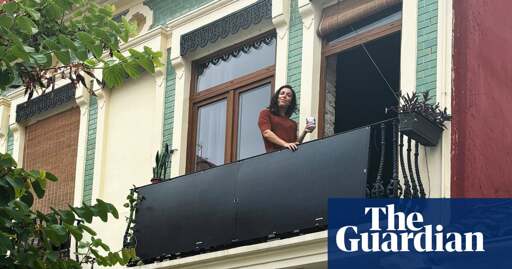Manufacturers say that installing a couple of 300-watt panels will give a saving of up to 30% on a typical household’s electricity bill. With an outlay of €400-800 and with no installation cost, the panels could pay for themselves within six years.
In Spain, where two thirds of the population live in apartments and installing panels on the roof requires the consent of a majority of the building’s residents, this DIY technology has obvious advantages.
With solar balconies, no such consent is required unless the facade is listed as of historic interest or there is a specific prohibition from the residents’ association or the local authority. Furthermore, as long as the installation does not exceed 800 watts it doesn’t require certification, which can cost from €100 to €400, depending on the area.
As with all solar power systems, balcony power only works in daylight and a battery storage system can add at least €1,000 to the installation cost.
Vernetta says the vertical surface area of cities is far greater than that of the roofs and that, in Spain, balcony panels benefit more than roof panels from the low winter sun.
Cities such as Helsinki are already experimenting with buildings with solar panel cladding.



Average solar panels are warrantied to give 100% power for 25 years. After that, they still work but at roughly an 80% rate, with a small fall off each year.
A 6 year payoff is an excellent investment. I’d gladly hang something with zero negatives on a balcony that just made me money for the rest of my life.
They don’t drop from 100% to 80% year 26. It’s a gradual but accelerating slide, with 80% still warranted at the end of the timeframe.
That doesn’t make PV a bad investment; overselling it puts people in the sceptic camp, though, which is what we’re seeing in this thread.
Its a general estimate of viability, yes. I did point out that panels drop off a bit every year, but it looks like that wasn’t clear if you feel like it needs a correction.
Every comment in here when I posted was skeptical about solar, with no stated reason. I added some general data about actual panels. If you want to add more up to date info, please do.
To be clear, I’m only wanting to clarify because I already live off solar. As such, I find it important to provide the correct information about expected panel longevity in general … getting into the weeds about things like panel type and brand tend to make people’s eyes glaze over while already skeptics, which doesn’t sell a lot of people on the virtues.
The important takeaway is, yes, this is mature tech that continues to evolve. There’s going to be loss each year, as there will be with LFP, so both can de viewed as depreciating assets when ignoring the cost savings accrued over time; however, price trends with both technologies suggest (thus far) that picking up an extra 25% of capacity in 20 years is not only doable but will actually lower the lifetime kWh cost of the system.
The real ongoing cost by then is going to be a few inverters.
If it replaced my need for a grid, I would.
It won’t, but the above replaces about 30% of power costs for life for these residents, and pays off in 6 years.
Thats still very good.
With the hell I continue to go through having made spectacularly bad choices in building out my solar, I get the trepidation. But my starting point was the grid being unreliable. If yours isn’t, great! That’s not the case everywhere, and freezing for a week changed my mind about the utility of being on-grid when I can have far more control for less money.
“Better than what I’ve been getting” is a low bar, but adequate for investigating other options. I’ve not correctly balanced everything yet. Still, I don’t just lose power because of weather hundreds of miles away, just my own inadequacy at research.
you won’t get that from a balcony panel, that’s for sure.
honestly, off-grid solar systems meant to drive a house are a pain. you need something to provide a steady sine wave from the DC of the solar and batteries, and usually the best way to do that is the grid. if you want to be off-grid only some times, you need even more equipment to be able to properly synchronise when connecting.